The Kruger National Park is the flagship of the South African parks, and in my opinion, probably the easiest accessed, most budget friendly safari option with the widest variety of wildlife you will find anywhere in Africa.
The park itself contains hundreds of thousands of creatures, made up of over seven hundred species of birds, mammals and reptiles, as well as containing archaeological, historic and cultural treasures. I visited the Kruger many times, and it makes for an easy trip for those visiting from out of the country, or those living in Joburg.
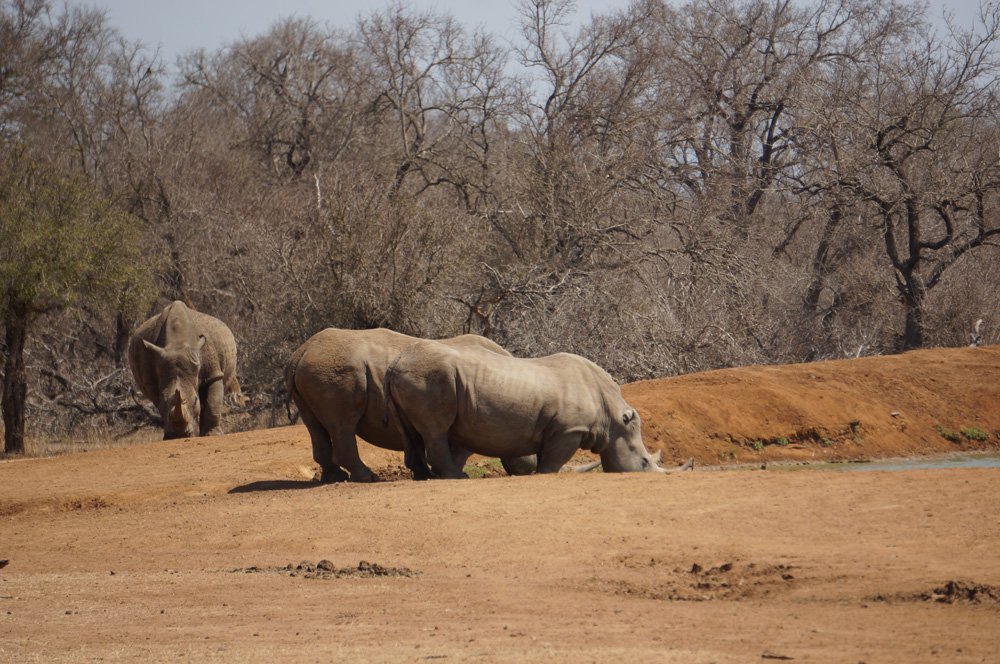
Located in a summer rainfall area, the park can be very hot and humid at this time, and daytime temperatures from October to March can range from mid twenties up to into the forties, nights in winter can drop to single figures but daytime temperatures are mostly perfect, sunny and low to mid twenties.
This makes the park suitable to visit all year round, with varying temperatures throughout due its vast size and number of eco systems. I’ve been to many game parks all around Africa and I always recommend the Kruger for the beginners as it has something for everyone. However, I still think the most picturesque and “elite” safaris are in East Africa, particularly in the Serengeti and Masai Mara.
- The Kruger is an essential part of any South Africa itinerary, including my perfect one to three week South Africa travel itinerary.
Getting to the Kruger National Park
Road access is quite easy from Johannesburg via well signposted good quality highways and well located entry gates, where on arrival, identification, overnight bookings or pre purchased wild cards are to be shown, forms filled in, and vehicles checked. A rules and regulations brochure will be handed out which must be read and from then on carried in the glove box at all times.
Flying to the Kruger
The Skukuza Airport is the gateway to the wonders of the Kruger National Park. There are direct daily flights to Skukuza on South Africa Airways from Johannesburg, and Cape Town. The Skukuza is probably one of the most novel and unique airports you’ll find in the world! Alternatively, you can fly to Nelspruit airport which is a larger airport for potentially cheaper fares. The drive is slightly longer but you are still pretty much right in the heart of it.

Driving to the Kruger
Most South Africans will elect to drive to the Kruger just because of familiarity. If you’re comfortable driving, I would recommend renting a car at Skukuza and driving yourself. It’s easy to rent a car from Skukuza and a drive to the Kruger is just an hour or so depending on which location you’ve picked out int he park (more details on that later in the post). Alternatively, you can also rent a car from OR Tambo in Johannesburg and make the 5 hour to Kruger.
Most visitors stock up on supplies on the way into the park at one of large regional supermarkets in towns close to the gates. You can also pick up a surprisingly large variety of foods at the camp stores, which also serve as a great back up for anything which is forgotten. One essential item to mention is the cooler box, which is needed both out on drives during the day plus moving between camps.
Camps and game driving in the Kruger
First up and importantly, the Kurger National Park is huge, the size of many small countries at nearly twenty thousand sq kilometers, and provides a more enjoyable experience if not rushed, slow driving always produces more. Roads throughout the park are both tar and gravel, and can be driven with any type of vehicle. No four wheel drive is needed despite the number of them in the park, although higher wheelbase vehicles like SUVs are extremely popular. The higher your car is, the better your view will be of the animals.

Activities abound, and include museums, hikes, bushwalks, overnight trails and much more, even an unfenced golf course for the adventurous.
Is a guide necessary in the Kruger?
Two questions I often see asked are ‘’do I need a guide’’ or ‘’ How will I know where the animals are?’’ Believe me this is not a problem, game viewing is as simple as driving around slowly with eyes peeled, watching out for wildlife in the bush, in trees, and on the road. Look for a gathering of cars on the side of the road, as this always indicates something interesting is happening. Big crowds will mean big cats!, however despite impressions sometimes given, this is very much far from always being the case. You may be surprised at the low portion of sightings you even find yourself!
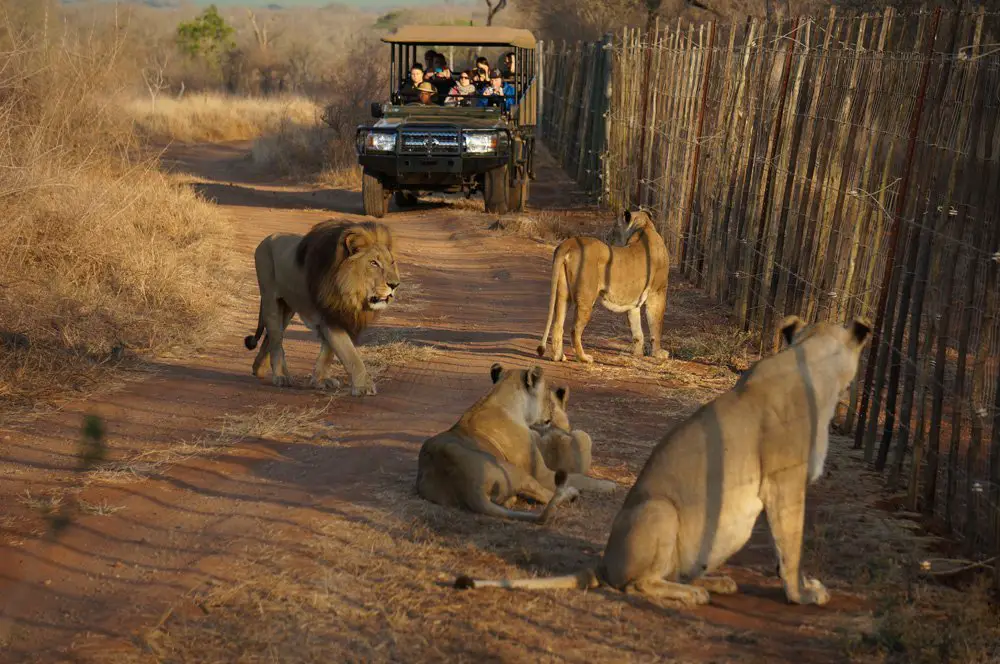
There are various ‘sighting apps’ and other such options for supposedly finding wildlife, which personally I do not use or believe in, because chances are animals will have moved on by time you get there, poor reception, may cause speeding, roadkill and crowding, and most of all because there is simply no thrill like that of finding your own sighting as you come over the crest of a hill or around a bend, why would you want to know what is coming up!
This thrill is actually one of the things that keeps many coming back over and over, simply not knowing what the day will bring, or what you will see out there. Plus chances are while you are rushing to some reported sighting, other opportunities will be likely missed.
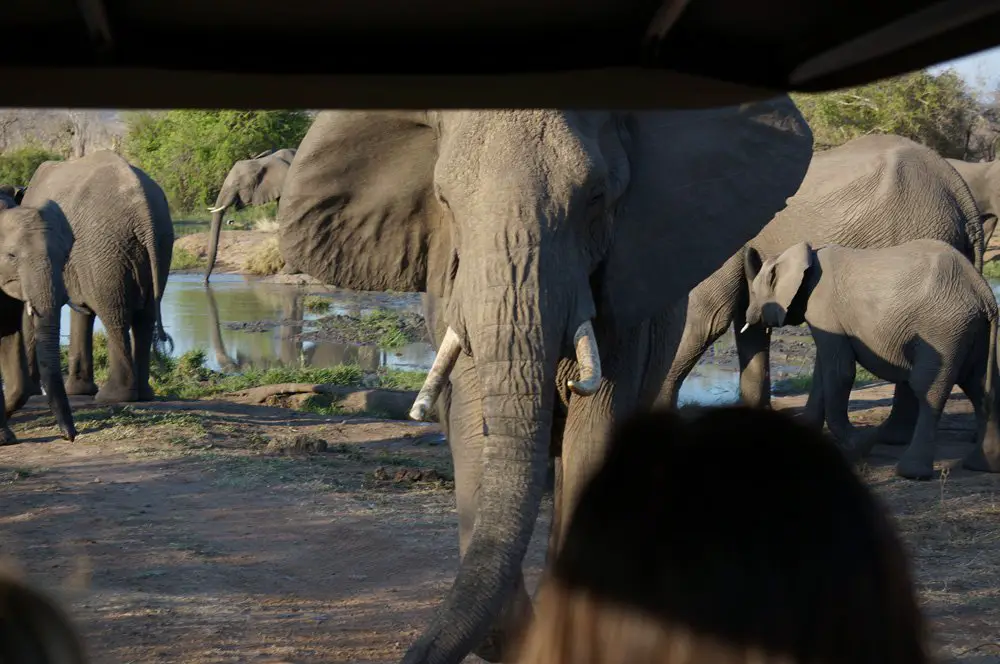
Drive the Speed Limit!
Keep to speed limits when driving, have your windows down, keep within the vehicle, enjoy the bush sights and sounds, and always adhere to the gate times. Alighting vehicles is not allowed apart from designated spots, so always take a leg stretch/bathroom break when possible. This means at picnic spots, viewpoints, some high bridges and of course the camps, where you can also grab a bite to eat or stock up on supplies. No alighting allowed at dams and waterholes for obvious reasons. Always carry snacks and drinks in the car, as you never know what hold ups or road blocks you may encounter. Some even carry ‘potties’!
How about Vaccinations for the Kruger?
Health organizations around the world will say there is a risk of Malaria in the Kruger and the surrounding regions. This is true but the risk is quite low. Tourists will inevitably take pills to quell their fears (I hate them) but locals, both white and black, will almost certainly laugh when you ask them if they take malaria pills. In the end, it’s up to you and what makes you feel the most safe. You want to enjoy the trip and not worry about things at the end of the day. I’ve written about Malaria and Yellow fever in South Africa in detail here.
When to visit for the best game viewing
It is often said that the best sightings are usually very early in the mornings before the heat of the day, and again at sunset as the sun is going down. While I do agree with this and certainly these golden hours are better for photography, and I am nearly always out of the gate at opening time, I would not forgo daytime driving for this reason if it is what you want to do, except in extreme heat when many animals really do go into hiding. We have had wonderful sightings during the day of just about everything, and the more you are out the more you will see.
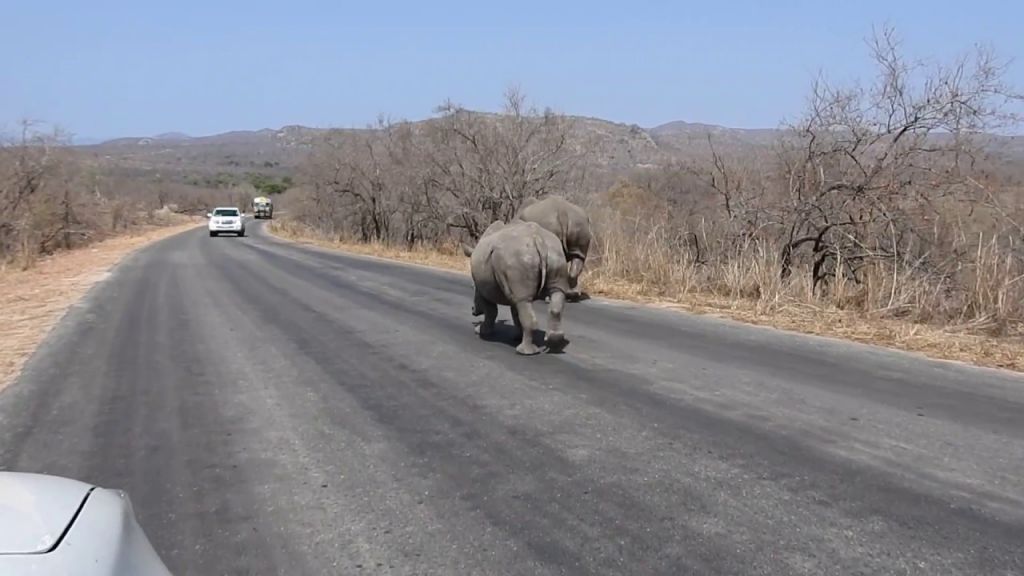
A favorite sighting regularly seen in the midday sun is that of elephants bathing, swimming and drinking in dams, rivers and waterholes. Massive Nile crocodiles also often spend hot days basking in the sun around dams, and if you are really lucky the enjoyment that comes from watching hyenas or baboons swimming is just unbelievable.
In addition, the dry season in South Africa’s winter months are generally the best months of the year for game viewing. The bush and shrubs are at their lightest which allows for better lines of sights into the animals.
Where to Stay in The Kruger
Nearly forty different camps and lodges are on offer throughout the park, in all price ranges, from basic to luxury, linen supplied, and cleaned and serviced daily. Within the camps are camp sites, tents, huts, cottages and bungalows and more, even big guesthouses for groups and families, amenities range from full kitchens and bathrooms, to communal facilities. There are twelve main camps, all have petrol stations and shops, and most but not all, have restaurants.

The bush camps and lodges, and satellite camps do not have these facilities and are geared for self caterers. These are more remote, in more natural settings on unmade roads, and provide a true bush experience, whereas bigger camps can be quite busy especially at peak times of the day, although accommodations are usually at some distance from the main areas, and are only accessed by staying guests.
There are then sites just for camping, exclusive use bush lodges, a couple of overnight hides, and luxury lodges located in their own concessions. Disabled accommodation is also provided by Sanparks.
Daily conservation fees apply, which I consider very fair compared with many other game parks across the continent. A loyalty card program known as WILD Card, offers great savings if visiting for longer periods, and/or using multiple parks. Members do not pay a daily fee, instead one single purchase giving a year of entry to up to 80+ parks. Usually this is worthwhile purchasing for a stay of around six days or more.
Many accommodations are air conditioned, but when making a booking, ensure you check on the Sanparks site exactly what is provided at each unit.
Booking your stay in the Kruger
The two most popular booking methods are by telephone or in real time online, here is my guide and some general information.
So once you have decided to take the plunge and enjoy this truly wonderful park, and have researched your options on the official South African National Parks website with its excellent information, including descriptions and photos of the accommodations and camps, now it is time to decide on where to stay, and for how long…
Check availability early is possible
First up check the availability of places you like the look of, ideally you need to do this very early, as popular camps and spots book up well ahead. Bookings open eleven months in advance although this can vary, and attempts are currently being made to increase and standardise this period.

Next on the Sanparks site, you need to register, this is quite straight forward and simply involves setting up a profile including personal details, passport number etc, and results in an account type set up which you will always have and be able to log in and access at any time to see the booking or make a payment. Later on, dates and types of accommodations can be easily changed, particular when you cannot get your first choice on the initial booking. Availability changes on a daily basis when people don’t pay their deposit, their booking is forfeited, and most have made amendments once a preferable choice of accommodation comes up.
Personally when booking I always like to use the telephone and talk directly to the Sanparks operators, any language difficulties are quickly eased by the fact that you have already registered, as they will access your profile and have all your personal details right in front of them, meaning you really need to only provide dates and camps. This should be the only time you need to call, and I have always found the operators very friendly and helpful
By time you sit down and log back on to your account you will probably have your first confirmation email, with general information, then another will soon arrive with the booking details and a reference number. Deposit will be due in thirty days, the balance sixty days before arriving. This is when it gets exciting as you can see all the planning coming together!
Alternatively you can do your booking all online in real time. I do not favor this method as you pay for your booking up front, whereas by phone nothing is due immediately, and changes afterwards are not quite as simple. The advantage is however that you get a five percent discount for paying in full. Again this is all just personal choice and preference.
From then on it is easy to make payments direct to your account. Soon after you will receive a confirmation email with a new statement, and the account will be adjusted accordingly showing the new balance.
Southern region of the Kruger
The Skukuza Area is the administration headquarters, and also the biggest camp, so is always busy and bustling with staff and public alike. Often called a mini city, where getting from a bungalow at one end to a restaurant at the other, can entail a car drive. Normally busyness is not something that affects staying guests as accommodations are well away from the main shopping and eating areas, and are usually quiet.
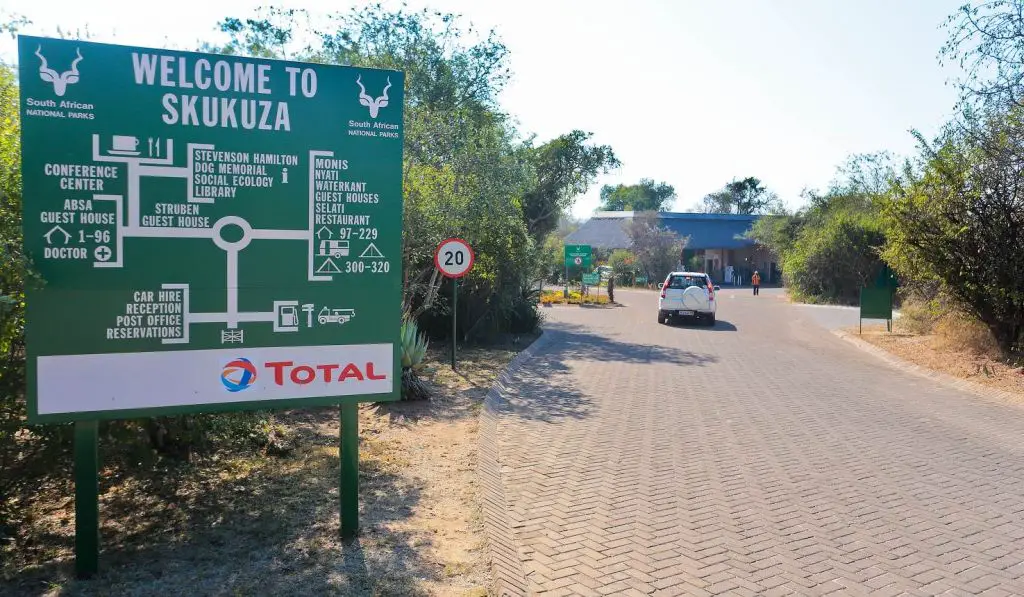
However I must say I now tend to avoid stopping here from other camps at mid morning and lunch times, as safari jeeps arrive around then and parking and access can be a huge issue, just plan to get there a bit later or earlier if possible. Cattle Baron, the best restaurant in the park imho, is also here, and is famous for its steaks, and the only place where I have had nothing but exceptional meals. To sit inside at night I would suggest a booking, you cannot book the outside deck with views.
Lower Sabie, right on the magnificent Sabie River is the other large southern camp, and is also always very busy, due to being in the heart of prime viewing areas, at a point in a triangle which is generally considered one of the most densely populated leopard areas anywhere. Pretoriaskop, Krugers oldest camp, and Crocodile Bridge are close to the perimeter, and are both fine choices, being lovely and peaceful.

Croc Bridge is right at the gate and does have has civilization in viewing distance which bothers some, I don’t really care for a few days as am compensated by watching the elephants crossing the river and the local game viewing roads. It’s only a short distance up to Lower Sabie but has a very different ambience. Berg en Dal is quite unique, in location and feel, a different style to many camps, but really nice, good restaurant, and is close to Malelane Gate.
Central region of the Kruger

Here you will find Satara, huge and very popular, famous for its easy access to many well known and wonderful game viewing roads where wildlife of all kinds is plentiful, thanks to the combination of heavy bushveld and open savannah that is not found everywhere in Kruger. Orpen is another main camp here, also on the perimeter near Orpen gate. Camp is small and beautifully set up with all units overlooking the waterhole, and no restaurant. Both camps are known for their much talked about webcams.
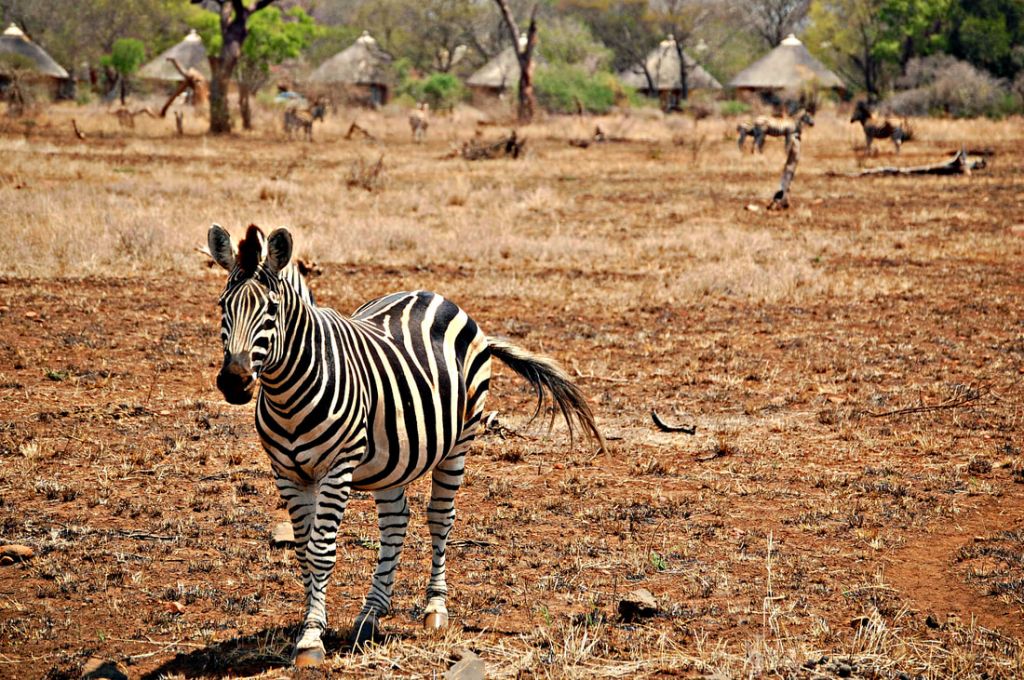
Heading north are Olifants and Letaba. The former is famous for its breathtaking cliff top location, overlooking magnificent Olifants River. Here the rooms with river views are easily the most popular and book up the fastest, and the two cliff top guest houses are simply spectacular. This camp is a wonderful place to just relax and enjoy, I love watching the eagles soaring right at eye level, and the wildlife below. Letaba is known for its peaceful ambience, sitting in an idyllic spot located right on a sandy bend of the Letaba river, and the Elephant Museum located here is always worth a stop.
Northern region of the Kruger
scenFurther along are the camps Mopani, Shingwedzi, and Punda Maria, this area is affectionately known as the ‘quieter north’. Game may not be as dense, but is still there and sightings are shared with few. All three are quite different, and have their own uniqueness, Punda especially with its private feel and hilly locale, beautiful botanical surroundings, summer birding, fever trees and of course the incredible baobabs. It is the northern most main camp.
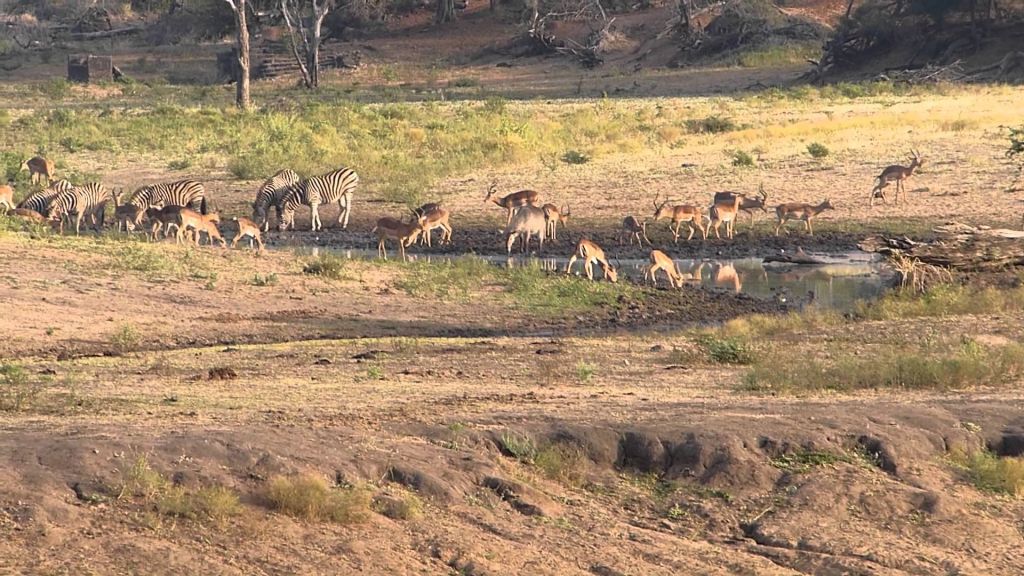
Shingwedzi Camp is quite large with differring styles of accommodations to some, and to me is all about elephants, including some of the biggest tuskers in the park. We seem to see them everywhere, especially south down the Kanniedood Dam road late afternoon, when great care must be taken driving. Accommodation here has views across the plains, but for a real treat stay in the guesthouse, where you can sit in your private yard right on the rivers edge, with game wandering the river bed just a few meters away.
Mopani I really like, up on a hill with a quite different look, no tents or camping here, just many large stone cottages and rondavels spread over a maze of streets running throughout the bushy grounds which have been purposely left this way, rather than the usual water sucking grassy lawns and gardens. It is located right above the Pioneer Dam and has a wonderful Baobab tree right inside camp.
The abovementioned camps as I said are just a small selection, there are plenty more options, just too many to go into every detail here.
Bush Camps in the Kruger
Bush camps I will add are every bit as popular for those who will be self catering, due to the remoteness and exclusive feel, often located down private and quite long unmade roads, really adding to the experience. The private Biyamiti road is probably the most well known for sightings, but all locations are excellent, my favorite is probably Talamati due to the camp waterhole which can be spectacular in dry times. These are also very popular with budget overland tours.

Another point is that just because your camp may not have a restaurant, does not mean you cannot still visit those at other camps while out driving. Heading out early am could mean you stop at a different camp for breakfast, or maybe on the way home later. For example when staying at Crocodile Bridge we often stop at Lower Sabie for a main meal mid afternoon and then just need a snack later back home.
There is so much more to know about Kruger than just the tiny portion I have touched on above, and I could go on but best I stop here to avoid overload!
Lodging Options – Private Lodge vs Staying in the Kruger
For full disclosure purposes, I love both experiences very much, and would go to both when budget allows. However like many regular visitors I do now prefer staying in the National Park, there is nothing like getting up in the morning with no idea what thrills you will have that day, and of course the fact that we can stay there for a whole month for the cost of a few nights [or even one!] in a private reserve. Regulars will understand my meaning, but today I will do my best to simply present unbiased facts as I know them. I am simply a passionate traveler and am not linked to any properties in any way.
The titles are self explanatory. Privately run concessions usually consist of an area of land, varying in size, and with said land dedicated to that particular lodge, although with many lodges you will find traversing of different properties by arrangement to increase game viewing possibilities, as many land tracts are really not that big overall. Kruger National Park is government owned and managed, with South African National Parks (SANParks) being the official managing body for both Kruger plus another twenty odd parks throughout South Africa.
The information comes from personal knowledge and experience, staying in both types of reserves regularly, and from people we have spoken to and learned from during our travels.
Under each topic I will advise what I know about private reserves, then follow with the same for Kruger National Park. For KNP, I only will reference staying inside the park at the Sanparks camps, not perimeter towns, nor will I cover day visitors.
Note there are private concessions within Kruger Park itself as well as the adjacent reserves, but for the purpose of this exercise they would fall under private lodges category.
Private Lodges in the Kruger
Here I think I could comfortably say that pretty well any lodges in the private reserves will be more luxurious than the bungalows, cottages etc in Kruger NP, as they should be. Quite a few do offer more rustic surroundings, but generally they offer a luxury stay, albeit over varying levels, and most are beautifully decorated in classic safari lodge style.
At top end lodges you may have a private heated pool, chandeliers, designer linen to sleep on, yoga and massages, fireplaces, designer toiletries to bathe with and a private butler to ensure your every need is met. Even at the lower to mid range, many lodges still offer considerable luxury, and inclusions could be air conditioning, shared butlers, plunge pools, private viewing decks, gyms, glass walled showers, curio stores, and often a full laundry service.
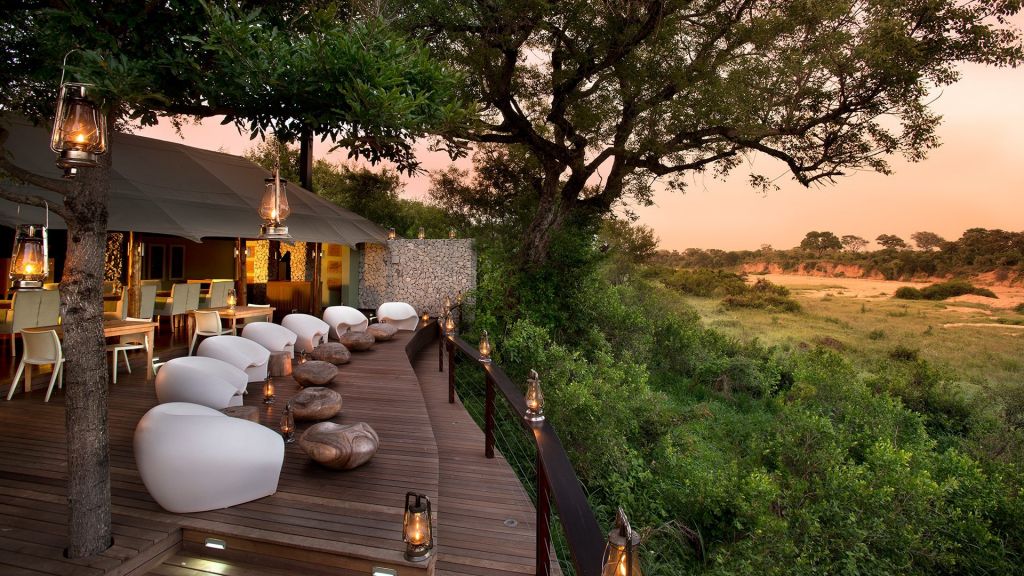
Quality of Rooms
It is rare that in these privates lodge you need to bring along much, most are 4 to 5* rated. Standard inclusions will be hairdryers, toiletries, swimming pools, safes, a mini bar, maybe in tariff or not, and tea and coffee making facilities. Some even have a ‘pod’ style coffee maker.
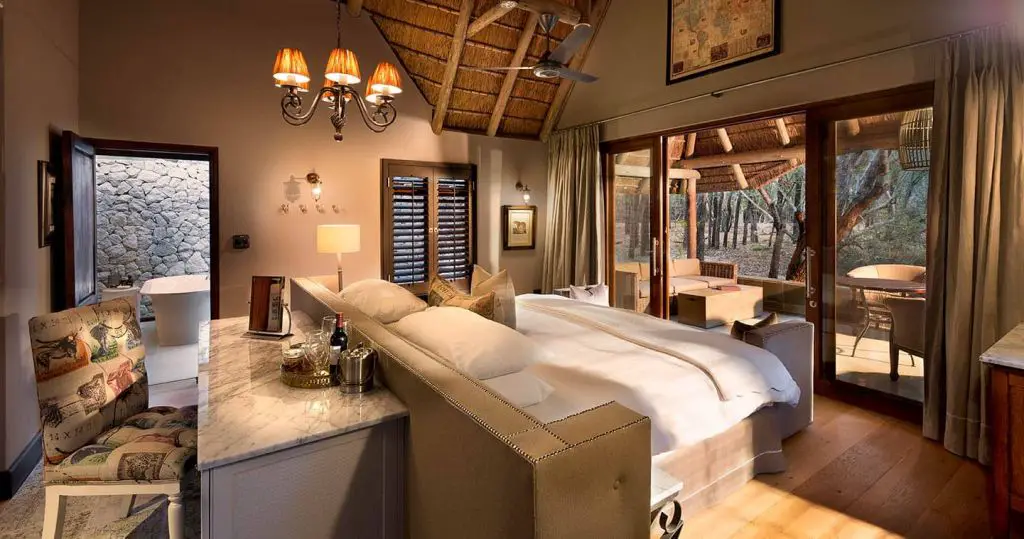
Rooms in some lodges may be adjacent within one large building, or often are individual traditionally thatched chalets or ‘khayas’, which offer a more private and luxurious feel. Some are simply a bedroom and ensuite, others more like a small apartment, with multiple zones, such as office and lounge areas. Many have outdoor showers, and large furnished decks overlooking the bush, at the top end you may have an outdoor spa or bathtub. Some offer adjoining and family suites, others are much more intimate and geared to couples.
Routing at private lodges
Unlike regular holidays, staying at these lodges means you follow a particular routine, consisting of morning and evening game drives, with downtime in between. This time can span a few hours in the middle of the day between breakfast and lunch, and again from lunch till the departure of the evening drive. This is where those lovely rooms really come into their own, as the time may be spent watching the wildlife from your deck, having a read, napping in bed, swimming in the pool, or just lounging around soaking up the atmosphere.
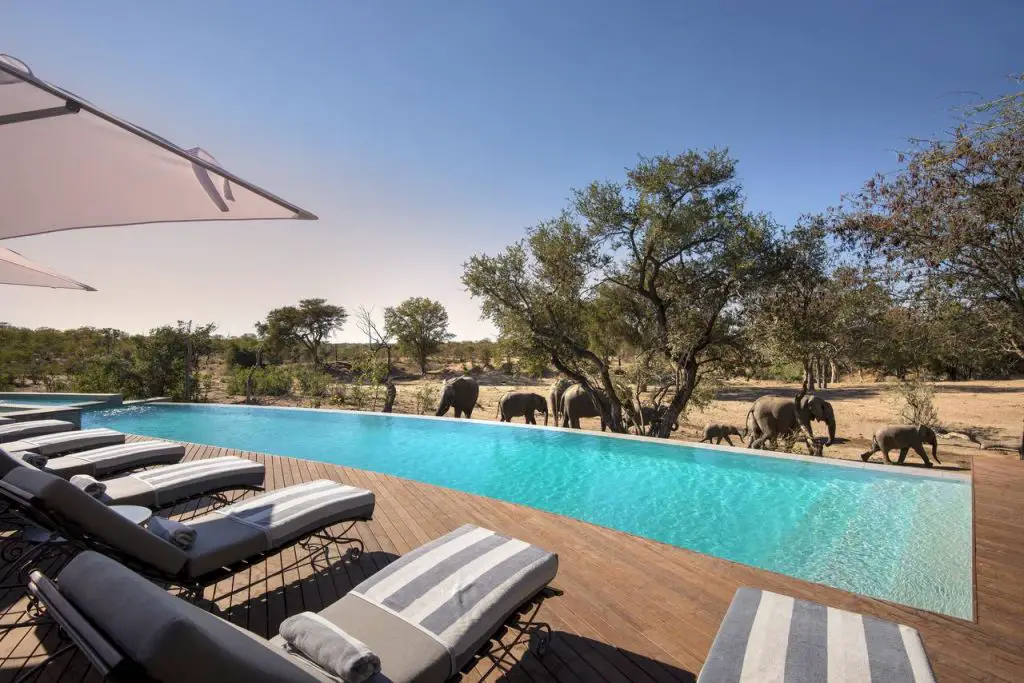
Some offer activities for guests to partake in during downtime, either included, or at extra cost. These could be at the lodge such as aforementioned massages or spa treatments, or involve visiting outside the reserve, such as a local village or school, or animal sanctuary, even helicopter and hot air balloon rides.
Tent or tree house style of accommodation is also available, some run off solar power and generators, with limited power supply during certain hours, and meals taken by candlelight, adding to the bush ambience. Some are quite big lodges, with 50+ guests, others are more intimate with just 12. Most are unfenced, and require you to be escorted to and from your room after dark. There are a couple of self catering lodges, but very unusual.
Cost of Private Lodges
Perhaps the most stark difference is the cost. Private lodges are world famous for how exclusive and luxurious the experience can be and the you can bet the costs will reflect as such. While there is the full price range for private lodges, on average, they will be higher than what is available in the public Kruger National Park.
It’s not uncommon to see the higher end private lodges charge over $1,000 USD a night!
Accommodations within the Kruger
Within the 2 million hectares of Kruger National Park, you will find plenty of accommodation options, with a dozen main ‘camps’ plus also bush veld camps and bush lodges, overnight hides and hikes, and camping and tented ‘satellite’ camps. As a whole Kruger offer a more adventurous and do it yourself style safari.
Kruger Accommodation options
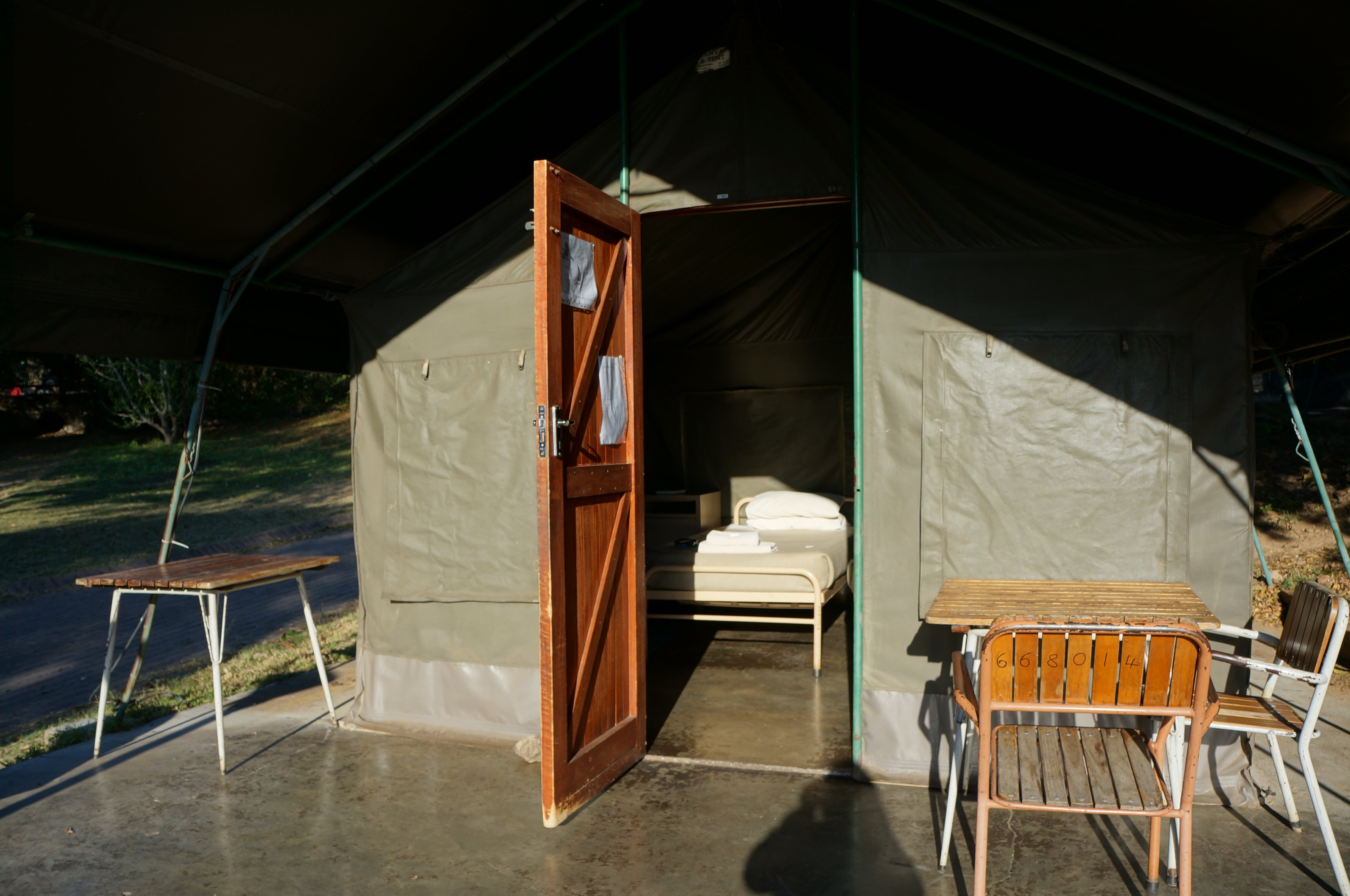
In main camps choices range from camping sites and permanent safari tents, through to huts and bungalows with or without kitchens, guest cottages and at the top level the multi bathroomed and bedroomed guesthouses. Within each category are more choices, e.g. tents and bungalows can come fully equipped or to save costs you can opt for a communal kitchen or bathroom. We like a kitchen because even if we plan to spend the day out, we may prepare food to take, but communal kitchens are very popular, and like the laundries, a nice spot to meet others and have a chat.
Units are serviced and cleaned daily, as are communal ablution and kitchen facilities. Most units have air conditioning and utensils, this is all indicated when you book. Personal items like toiletries and hairdryers not supplied.
Some units are in prime locations on the perimeter fence for great game viewing, some are located on clifftops for spectacular views. Big guest houses are fabulous for groups and families, with lounge areas, full kitchens, bars and TVs, and often are set in prime position, some even with private waterholes.
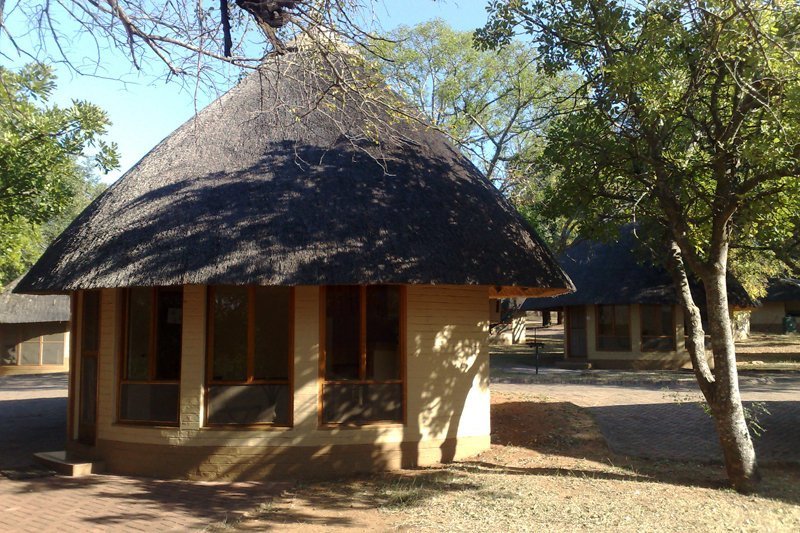
Main camps have well stocked shops, petrol stations and restaurants. Facilities vary, but there are swimming pools, laundromats, libraries and museums, one camp even has a big outdoor screen showing wildlife films nightly.
Then there are bushveld camps and bush lodges [for groups], even overnight hides for the more adventurous. These camps do not have restaurants or shops therefore are fully self catering. Very popular, particularly with locals and return visitors, because of their wonderful private and bush ambience, they need to be booked well in advance, and some cottages here can be bigger and more luxurious than the regular bungalows.
Dining in the Kruger
Private:
Private lodges usually include all three main meals plus snacks. Snacks means nibbles with drinks while out on your evening game drive, and traditional biscuits or rusks with your coffee on the morning drive. On top of this could be coffee and snacks before the morning drive, high tea before the afternoon drive, even food in the room as well.
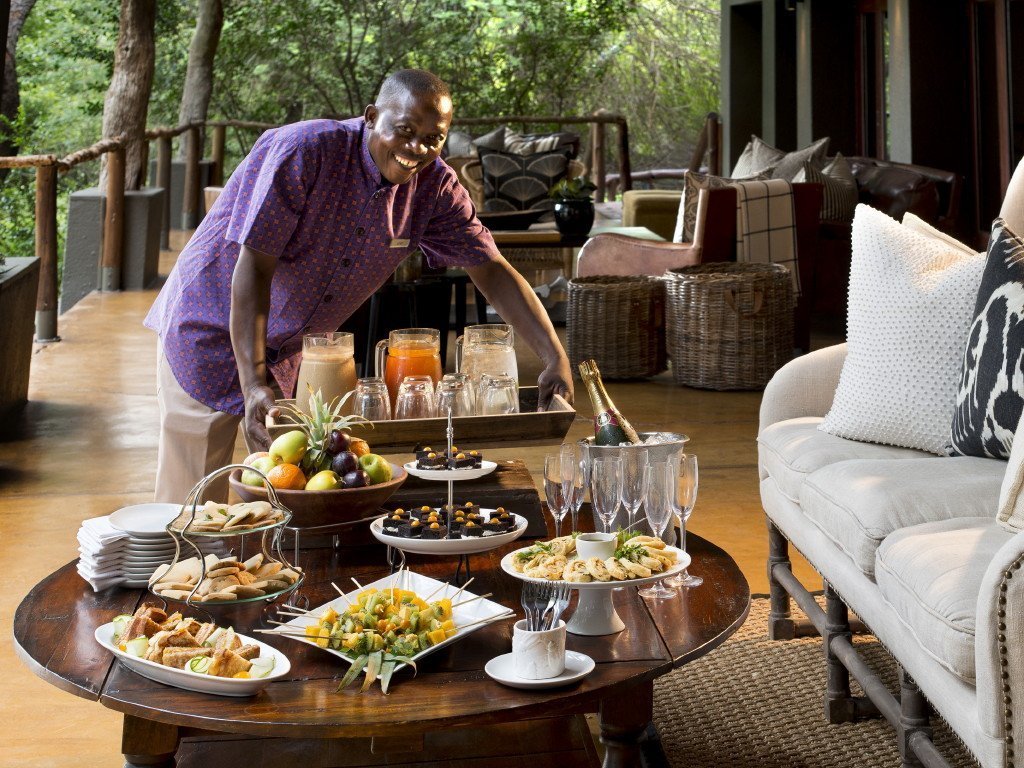
Usually breakfast is served on returning from the morning drive, dinner after the evening drive. Food quality should be of a high standard, although different lodges may provide varying meal offerings, for example some do a later brunch then high tea before the drive, meaning two main meals per day, although three is the norm. We have certainly never gone hungry at a private lodge! Special food requirements can usually be catered, but do notify in advance.
There are also various systems with meal locations and rangers. Some lodges may serve dinner in a different location each night. E.g. in the Boma, on the lawn, in a lounge or restaurant area, on the river bank, and of course in your own room. [A boma is a type of traditional sheltering reed enclosure, and in this context is associated with an open air barbeque with guests seated around a flickering fire and glowing lanterns]. Boma dinners are usually a buffet style where everyone eats together including the rangers, and often make for a fun and rather rowdy night, some lodges even have all dinners in the boma. You may also get a chance to taste the very species that you could have seen on an earlier drive, such as kudu, warthog, or ostrich.

Many also offer surprise or romantic unexpected treats. One memorable dinner was when we stopped in the bush on the way back from the evening drive. Suddenly we were in the middle of a beautiful lantern lit area under the trees, with candlelit tables set, and a fabulous braai dinner awaiting us. It was wonderful, and we were joined by all the lodge staff, although I could not help keeping one eye on my surroundings that night. At some lodges the ranger eats with his guests every night, although this is more uncommon, some always sit the guests together, others change it up with guests eating alone sometimes. Usually you eat with the same group that you are with on your game drives, this means you get to meet lots of interesting people from all over the world, admittedly we have had it backfire once or twice, but that’s unusual.
Kruger:
When it comes to eating, you can really do whatever you feel like, no set times here, so a day may go like this. For those who like to head out of the gate early mornings at opening time [like us], generally we take a thermos and mugs of [Amaroula] coffee in the car, plus some traditional rusks to nibble on, remembering this can be as early as 4.30a.m. The first coffee is finished while chatting at the gate, and the next will be had late morning, either driving around, or stopped somewhere, maybe at a sighting or picnic spot.
For main breakfast you can prepare it yourself as the locals do, on one of the gas skottels provided at the picnic spots, or you may have a simple bowl of cereal, or you may buy a meal at one of the camps or picnic spots, to enjoy while soaking up the outlook. I love to see the feasts that some cook up on the skottels, yum! We enjoy a stop at Afsaal picnic spot for a hearty cooked breakfast or lunch when in the south, but of course you can do this at any of the camp restaurants at any time during the day, it just depends where you are when you get hungry! It’s really fun enjoying breakfast at different camps and other spots when out on drives, some plan ahead, some play it by ear.
Depending on how you are going you may have a light breakfast and perhaps a main meal around lunch time or later, made yourself back at camp, or at a restaurant. Some come back to camp to get their lunch and have a rest or a nap, others stay out all day and only have dinner at ‘home’. Dinner might be quite light if you have already had a main meal, or it might be a night out at the camp restaurant, or follow tradition with the locals, and fire up the braai and cook up your own feast. It is a great atmosphere in the camps at night under the stars, surrounded by the gentle glowing of the coals and the yummy smells of braais cooking.
Virtually all the accommodations by the way, have individual braai stands at each unit, after all eating in the park is a very sociable experience. We have never had a visit where we have not met lots of friendly locals, often ending up having a meal or drinks together, it’s all part of the experience. South Africans love to share information and chat about sightings, and are very proud of their wonderful park, and rightly so.
Personally our trips usually involve a mix of self catering and meals in restaurants, and now maybe even more meals out with the recent improvements made to some of the eating places.
Game Viewing in Private Lodges
Once again massive differences here. I will generalize as best I can, but my knowledge is based on experiences in the two reserves I am most familiar with, Timbavati and Sabi Sand.
Private lodge experiences

Game viewing is included in the price and conducted in large open 4 x 4 safari vehicles, seating up to eleven including the guide, plus a tracker out on the front trackers seat. Drives are done twice daily, and lots of lodges also include a morning bush walk. This is an opportunity that should be taken, generally done in one of two ways. It can be separate to the drive, e.g. you head out after breakfast, or it can be taken from the vehicle while out on the drive. Personally I love the bushwalks, but would not choose a lodge that replaces the morning drive with a walk, simply because of the need to maximize all viewing opportunities, including ones not near the lodge. Some great sightings are often seen very early before the day heats up, and I cannot imagine passing that morning drive experience up.
Vehicles
Number of people in a vehicle: There are three rows of seats plus one single next to the driver, therefore maximum guests together is ten. The normal number varies from only six upwards, a few lodges do offer a definite six max, and many more do their best to keep it to six, but it depends how full the lodge is at the time.

We have seen jeeps out there with just one or two couples in the back, and we have also seen them loaded up to nine or the max of ten. Peoples preferences vary on this, some have no issues with how many are sharing the seat, others [including ourselves full disclosure], will only stay where there are two per seat guaranteed. Various reasons, mainly comfort, but also to just have the opportunity to move around as much as we want with full vision out both sides of the jeep.
Other reasons are to be able to throw all your stuff such as coats, camera gear etc into the middle, and of course very importantly for ease of taking photographs, without attempting to lean over someone else, or have someone lean over you. Some of the lodges that offer six max have boxes fitted in the middle of the seats which are fantastic for lenses, jackets etc. So all this is just personal preference, and may or may not be a factor in lodge choice, but it needs to be said, as generally it is not something first timers are aware of. There is only one lodge I know of that offers a maximum of four per vehicle, and there also some that offer private vehicles, for an extra cost of course, but many take advantage of this, particularly keen photographers.
Seeing the Big 5
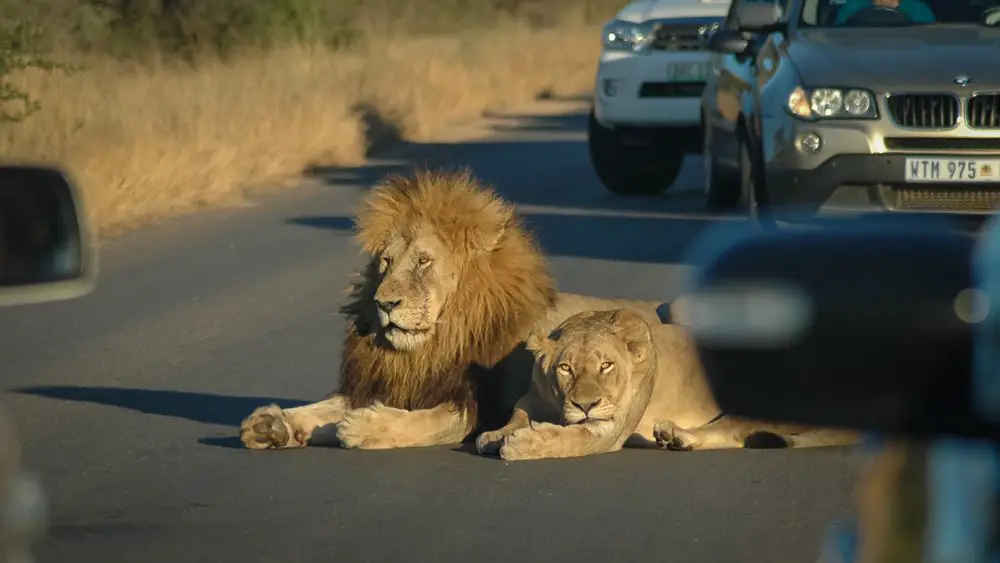
Big 5: One sometimes touchy subject is [mostly for some of us regulars] the term Big 5, an old hunting phrase that has turned into a somewhat overused marketing tool, after all I really don’t know many people that have buffalo at the top of their wish list. A quick scan of most lodge websites and you will soon see they offer big 5 viewing, which is all well and good but a shame IMHO that there are so many other wonderful animals that deserve just as much attention and will provide just as thrilling sightings.
For example hippo, giraffe, hyeana, African wild dog, cheetah, zebra and so many more. Fortunately a good ranger will have an appreciation for all, and will try to show as much variety as he can, but remember he is also at the whim of guests desires, and big 5 are what many, especially first timers, want to tick of their list. However IMHO the guests who have the best time, are the ones who are interested in the all of the myriad species to be found in the bush. Luckily a good ranger will chat to his or her guests about what they would like to see, and will do his best to ensure they leave satisfied.
The really sad part is that Big 5 are still hunted in the area, so I guess the term will live on.
You’re not actually in the Kruger
To add to that remember if you go to a private reserve such as Sabi Sand or Timbavati, you will see plenty of wildlife, but you are not in Kruger Park itself, rather you are in what is known as Greater Kruger National Park, which is the title that includes the adjacent reserves, and private concessions within Kruger.
Looking on a map will show that Kruger itself is massive, and therefore home to an incredible quantity and variety of wildlife, the private reserves being a tiny part of the park, therefore the animals you see will also be only a tiny portion of the total widlife, so do not expect the wide open plains with large animals herds that you may have an image of, these private reserves are only large enough to take so many animals, although there are some wonderful big buffalo and elephant herds around.

There is nothing wrong with that, but many people do not realize this before they go and may have different expectations, we have met plenty like this. What you do get however can be spectacular close up and intimate viewing of big cats and more, and of course the Sabi Sand reserve rightly so has the reputation of the best leopard viewing in the world, and has certainly never let us down.
Traversing: Number of vehicles at a sighting is restricted to two or three, in the interests of animal welfare, but in an area that has lots of vehicles traversing, you sometimes have to move off after a few minutes to allow another vehicle in. This is known as a queueing system, operated by lodges who work in syndicates which allow traversing rights on each others properties, and it should be well managed by the various head rangers.

Using Sabi Sand area as an example, in a huge reserve like Mala Mala, [technically not part of Sabi Sand], there are no other vehicles traversing because they have such massive tracts of land, and have ample game viewing on their own property, especially as they have a massive border with Kruger.
Others in the south and middle zones are similar, and may only traverse with one other lodge, giving guests a fairly exclusive experience. In the western and northern sectors you will find quite a few lodges all traversing each others land, therefore giving guests a massive viewing area, as a map will show, each individual lodges land area is really quite small on its own. Rangers from different lodges will radio each other about sightings and even help each other out with seeking particular animals.
We have never had a problem ourselves with this, in fact the sharing of sightings usually means much better experiences for guests. Sometimes it can be better than others, I do remember a time once when an amazing wild dog sighting was so popular that we barely got a couple of minutes with them, another time in a non traversing lodge we spent an hour and a half at one spectacular sighting, so you see lots will depend on where you are and when. The trade off for maximum sharing of sightings can be less time spent at same.
Location for Private Lodges
If you are choosing from several lodges that all traverse the same area, one of the factors influencing me would be location, I would tend to choose a more central lodge, that does not have as far to travel in each direction, there are occasions when it may be just too far to head from north all the way south and so on, it does happen. Also be aware some reserves have large tracts of land that are held by private owners, or used by other ‘tourists’.

Many lodges also advertise that with no fences along the Kruger border, animals wander in and out of the reserve. While this can be somewhat true, IMO this is not something to rely on to enable better game viewing. Most animals are territorial to varying degrees, and do not just wander backwards and forwards across borders each day, especially the big cats that people want to see, and what they do not say is that it is just as easy for the animals to wander back into Kruger, I have seen it happen, and as you will see on the map, it can be quite some distance to travel.
When the fences were dropped some wildlife did move back into Kruger for its space, but intense management of private reserves has allowed growth and establishment of some of the iconic species, most valued when it come to the tourism dollar, with leopard viewing a prime example. Another example is a famous lion pride that has just recently moved out and into Kruger and up to the Manyeleti reserve, so yes it does work both ways. Other animals tend to go where they can ‘fit’, one of the reason cheetah are so few and far between in Sabi Sand, is because of the dense leopard population, although a couple have fortunately recently re established in the area, which is wonderful.
The rangers that take the guests out on these drives can and will definitely have an effect on your experience. There are many stories about rangers and trackers, we personally have always had incredible rangers with an astonishing knowledge of the bush and creatures, and a passion to match. This is really what you should expect, especially paying big $, a fully competent, experienced and trained ranger and tracker team, that will not only be able to share their knowledge, but have a high level of people skills. They will be after all completely responsible for your safety and safari experience, and fortunately I think most meet these requirements.
One more aspect of private reserves is the advertised ability to go off road. Again this can be a bit of a controversial issue, especially with bush ‘purists’ and many others who do not believe that these massive vehicles should be allowed to drive into the bush at all, destroying habitat and possibly many small creatures along the way, and a couple of my experiences have me somewhat agreeing. Anyway it is a feature of the reserves, it is private land and so they are allowed. Sometimes they will state for ‘special’ or ‘big 5’ sightings, and this is usually the case, but it needs to be made clear here the trucks do not just rampage around the bush looking for wildlife, in fact there are tracks and roads everywhere and these are where you will drive, only going off road if a special sighting has been radioed in, or your tracker has found tracks leading to something special.
Even then extreme care must be taken, it would not only be unethical to do otherwise, but the untold damage to the bush and its inhabitants would be shocking. And really many of the animals are actually found on or close to the tracks anyway, after all they use them too!
Expect amazing close up experiences unlike anywhere else.
Game Viewing in Kruger National Park
In Kruger you will find a completely different type of vehicle doing game drives, normal cars! People drive around the park on their own steam, having a wonderful time searching for wildlife and soaking up the atmosphere, or coming across other cars indicating there is something to be seen, or enjoying the unequalled thrill of your own discovery.
It’s a public park

Unlike in private reserves, which for the most part IMO cater for overseas guests, drives in KNP are done by both foreign and local visitors, in either their own or a hired vehicle. You will see everything from small sedans, SUVs and utility vehicles, up to large 4 x4s. Other types of vehicles will be seen too, like vans and occasionally small buses, plus of course the ubiquitous ‘safari jeeps’, private game drive vehicles operated by tour companies. These come into the park on a daily basis from outside locations, offering clients various options such as full day or half day drives.

Some are custom safari trucks, others are modified utility vehicles with the seats and covers built up on to the back. Comfort levels seem to vary considerably, and do remember this if you are planning a full day drive, as most are open sided and high up, so the wind factor can be quite considerable. These are ideal for those who do not feel comfortable driving themselves around, or who would like to have a guide, and also with solo travelers who would like to join a group to see the park, so can be great option for many. Because of time limits, and sometimes high expectations by guests thanks to marketing, they are mostly seen in the south of the park. I won’t put further detail here, as this post is more self drive related, and my opinions may be too subjective.
Drive whenever you want

Because of Kruger being ideal for self drive, you can simply drive wherever you want whenever you want. I have touched on meals above, and the same goes for game driving. Many like us head out at gate opening times, not returning until gate closing time, which could be up to a rather long fourteen hours a day, not what everyone does, but the thing is you can choose to do so if you want to. Many return to camp during the day, maybe after a morning drive, and have a meal, a nap, a swim, do a bit of shopping, or just relax and enjoy the location, similar to the private lodge routine. I always suggest to stop wherever you can when out driving, as you never know when you could be held up on the way back to camp, or just simply spend a lot of time at a good sighting. Toilets are found in picnic spots and camps, and you can also stretch your legs at various viewpoints, hides and some bridges that allow you to alight.
You do not go off road, and just as well, there would be no animals or bush left if that were to happen, the land would simply be decimated. There are thousands of kilometers of roads and tracks to drive without doing this anyway, and there is ample wildlife viewing from roads, hides and viewpoints. Remember there are hundreds of thousands of creatures here and there is not the need to go off road, unlike private reserves where numbers are lower. And just like in reserves, wildlife also use the roads and tracks, sometimes providing spectacular sightings.
The Crowd size in the Kruger

Often when talking about Kruger people will say it is more crowded, and parts certainly can be, but also unfortunately people will often emphasise maybe a crowded sighting they saw, while forgetting about all the hundreds of quiet sightings that are going on at the same time! With all those roads to drive, there is no need at all to hang around at a crowded sighting or for that matter even drive the busier roads all the time. It is no secret that the most popular therefore busy areas of the park are in the south, particularly in the famed area from Skukuza to Lower Sabie, both big camps, and the reason is simple, this is a very game dense area.
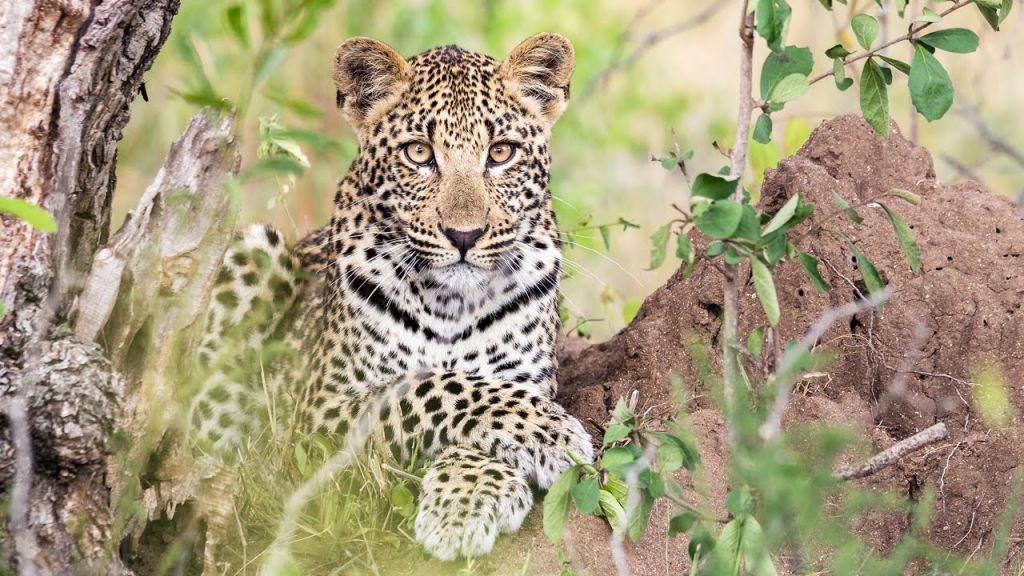
In fact with Kruger boasting a population of over 1000 leopards, and many being right here in the south along the river, often one lounging in a tree will cause cars to park along the road for several days. Any regular will have a story of coming across a bunch of cars watching a leopard in a tree, did not hang around, and enjoyed another leopard down the road which they had all to themselves! But these instances are not indicative of the whole experience at all, in fact I can probably count on less than one hand how many times we have been caught in a catjam, and yet there are hundreds of other sightings we have had either to ourselves or just shared with minimal cars. You need to get onto the unmade roads as much as you can, and really keep your eyes peeled, and of course more importantly avoid the local holiday periods, such as school holidays, Christmas, Easter etc. I do know it can be difficult when time is short, and you want to maximize your chances.
The central areas of Kruger are also very wildlife dense, for example the areas around Satara, Talamati and north to Olifants. For those wanting to maximize big 5 game viewing, often this is about as far north as they will go, if that far. Then when they return once again, as so many do, they will do as the locals and regulars do, and venture northwards into the less populated areas, for example Mopani and Shingwedzi, as well as giving the bushveld camps a try. There is still plenty to see in the north.
At nearly 20,000 kilometers in size, and home to some 200,000 mammals and an amazing variety of birds and reptiles, there is plenty for everyone to see without being in crowds. We always include a long stay in the south as possible, and some of our most spectacular sightings have been on drives taken from Skukuza, the biggest camp of all.
Another option for visitors to the park is guided bush walks, taken with an armed ranger, an experience not to be missed if you have the time. There are also guided sunset, night, and morning game drives in open game trucks that leave from camps and some gates, usually getting you into the park when camp gates are closed to others. Bush Braais are another great experience, where a game drive includes a stop out in the bush for dinner and then another game drive on the return journey, also to be booked at camp.
Price of Private lodges vs Kruger National Park
Private:
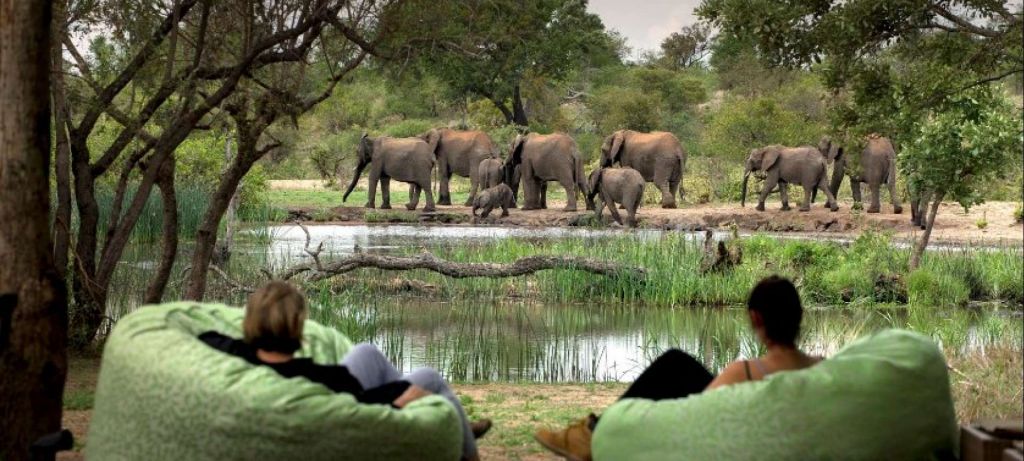
The pricing for these lodges is pretty hefty as you would expect, with rates for a couple from around the $4/$500 per night mark right up to over $3000 per night. You may pick up something cheaper, as there are regular specials offered, maybe a winter special, or an offer to stay for four nights, paying for three, honeymooners special etc. Like any hotel or resort the levels of luxury and inclusions offered are generally related to the price, however in some reserves paying the biggest $ does not always guarantee the best game viewing experience.
Kruger :
In Kruger the price range for different accommodation is quite large, but here is a bit of a guide to what you can expect price wise, [not including camping]……
Permanent safari tent, for 2pax, from around R480 with fridge, huts start at R280 for 1pax and R445 for 2pax, and bungalows start around R880 for 2pax. The large guesthouses cost around R3400 for 4pax. As you can see all very reasonable considering the location.
Of course international guests will have car expenses on top of this. Meals can be as cheap as you like if you self cater, for us that’s a lot cheaper than at home.
Also allow for daily conservation fees, which can be reduced by purchase of a ‘Wildcard’ for longer stays, though fees apply to private reserves also. These fees are vital for conservation of the parks species, particularly with the ongoing and expensive war against poachers.
Summary
In summary you should have a wonderful experience whatever you choose, after all Kruger is South Africa’s flagship and most famous park.
In private lodges I have met people who have no idea they are not actually in the main part of Kruger Park, and I have met people who never thought they would be able to return again because of what those few days cost them. Others of course would not have it any other way and are happy to spend big $ to be able have the experience of being taken out on drives while staying in a luxury all inclusive lodge.
Many of those who only stay within Kruger Park camps also would not have it any other way, and cannot understand the point of spending all that money in a private lodge, so how lucky we are to have such a tough choice!
So both ways have their pros and cons, and their fans, but let’s at least have people make informed choices, rather than what is only shown in the glossy brochures. Even more concerning is that so many people do not experience Africa at all, despite wanting to go, it’s on so many bucket lists, because they do not realise that there are budget friendly options that do not involve tents and overland trucks!
If you need luxuries that are mentioned at the top of this post, then a private reserve may suit best, especially if you only have a very short time. The animals here are very habituated to vehicles, allowing incredible close up and sometimes spectacular viewing, e.g. as soon as cubs are presented to the outside world by Mum, they will have large game vehicles passing by or sitting close. A photographers dream. Ranger conduct is excellent and nothing should be done to disturb animals in anyway, but yes as they are used to game vehicles, and sometimes but not always they can be easily ‘found’ , some people like this and some not so much. Also consider many experiences at these lodges will be fairly similar, so a read of the reviews right here on this site will give you a really good idea exactly what to expect.
In Kruger of course the biggest thrills most often from what you discover yourself, whether you come across a pride of lions or pack of wild dogs down a dirt track, or spy an amazing eagle on a branch above, or my favorite, finding an animal for the first time that you have not seen before because it is rare. Many with time restrictions do Kruger itself in a day and see lots, but the longer you stay the more justice you will give the park. We have had equally awesome experiences in both places, but we do like that we can spend a lot longer at a good sighting in the park of course.
In fact to me this is one of the primary and most important differences between the two types of reserves. While wherever I am, I will be equally excited when I get up in the morning to head out on a game drive, in a private lodge I will mostly have a fairly good idea what my drive will be like, and what I can expect to see, and this can be very much also affected by the other guests driving with you. Having said that however, of course this is not the same feeling for someone on their very first safari.
In Kruger Park when I get up in the morning I have absolutely no idea what the day will bring and what amazing experiences I will have, and that is exactly the feeling of anticipation that draws so many people back over and over again.



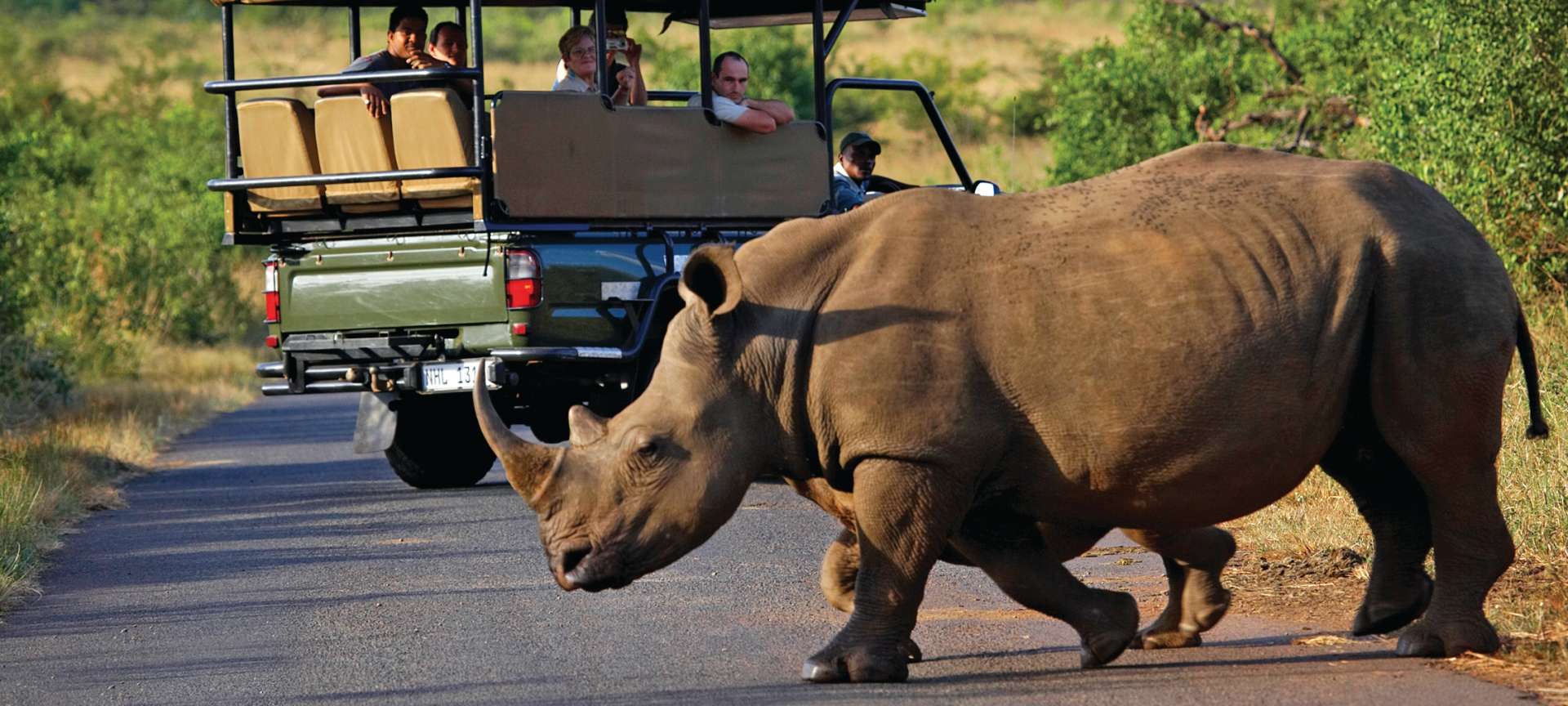
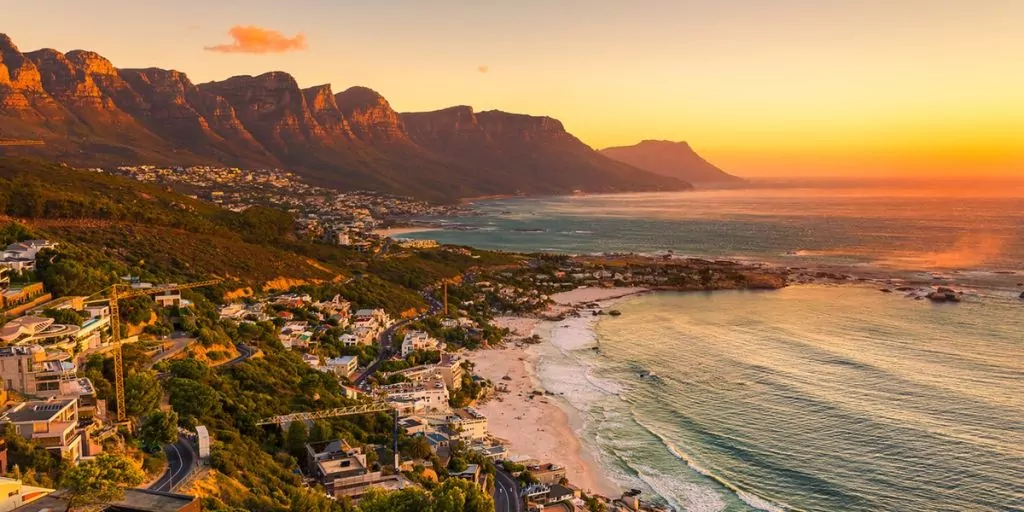
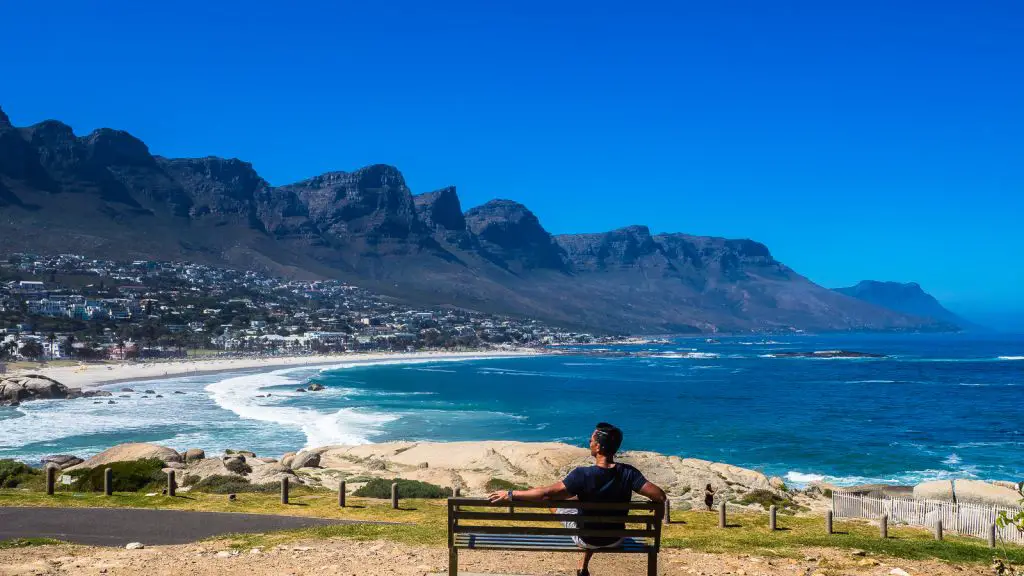

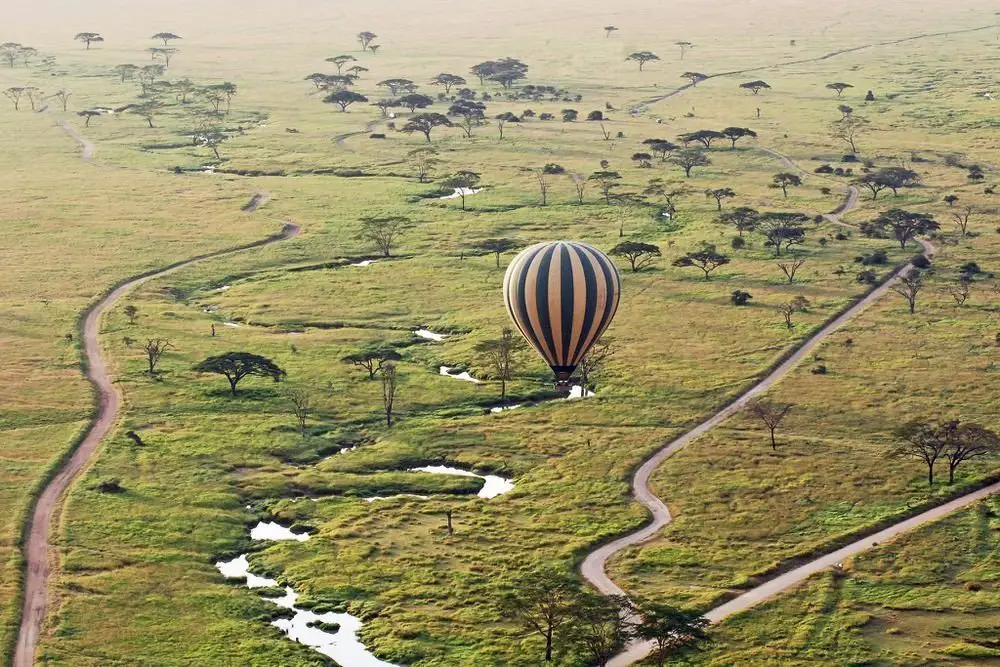
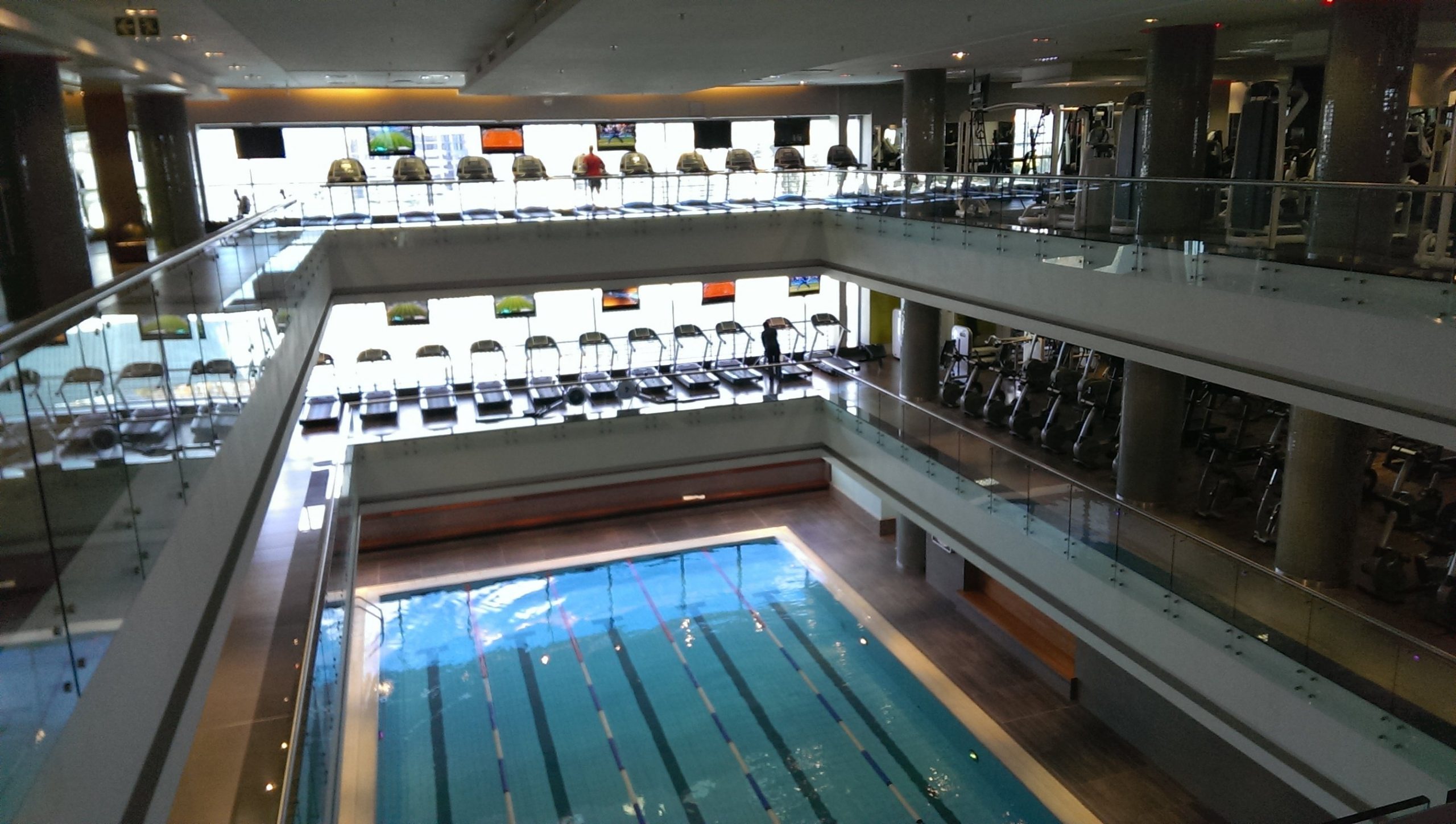
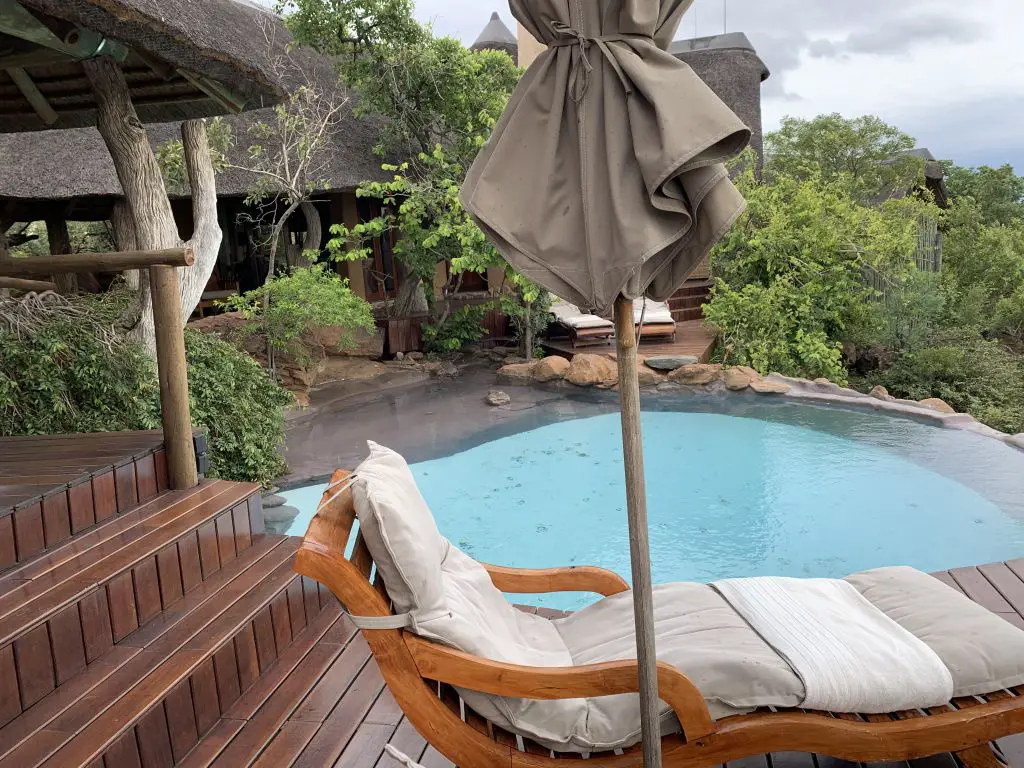
This is so helpful — both the article and blog in general (I’ve found myself deep diving all around the blog the past few days).
Which of the private lodges have you stayed at already — would you recommend any ones in particular? Currently planning a honeymoon!
Hi, This must be the most detailed guide we have read so far about Kruger park.I love it so much. This would be very helpful for us in the future. Thank you for sharing.
Thank you! Enjoy your trip int he future!
Hi Johnny!
Kruger is on our bucket list. This is a complete guide and I love it so much. This would be very helpful for us in the future. Thank you for sharing. By the way, your photos are beautiful! 🙂
Cheers,
Jessica
Hi Jessica, glad you like it! Visit soon and enjoy your trip!
This must be the most detailed guide we have read so far about Kruger park. Looking forward to plan my South-Africa travel ideas with this guide.
Thanks Matthias! Glad it was helpful and enjoy the Kruger!